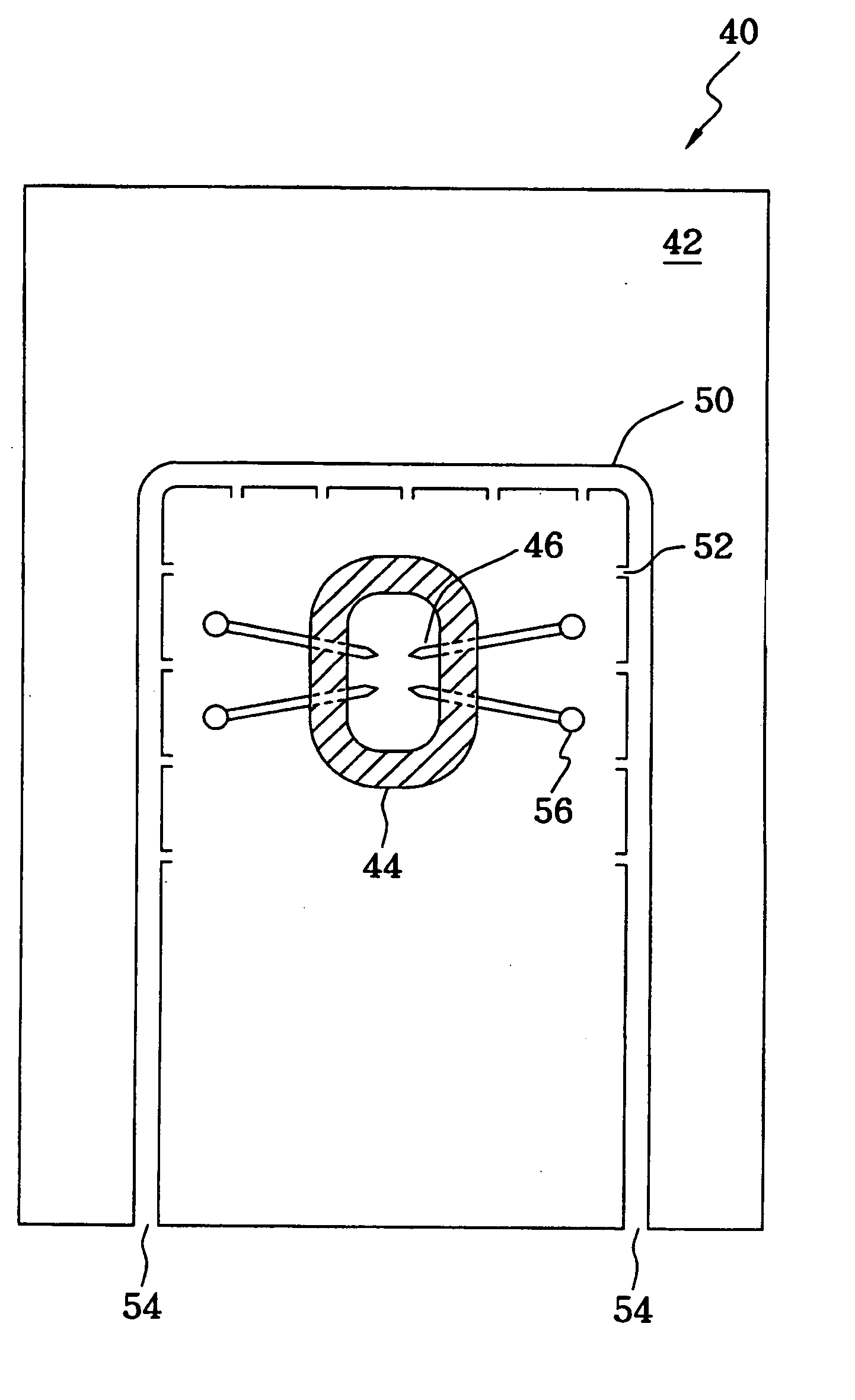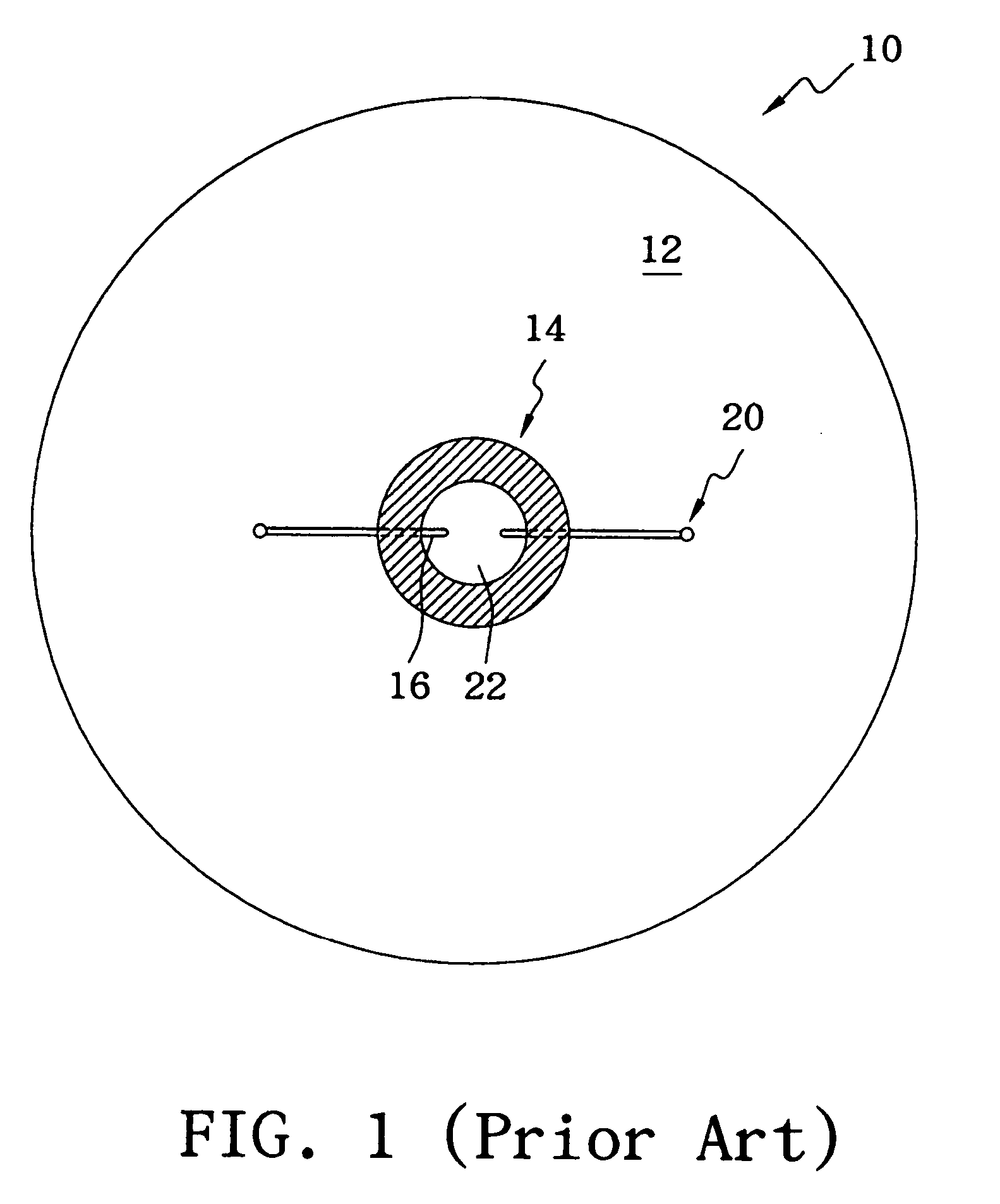Probe card for testing a semiconductor
a technology for semiconductors and probes, applied in electrical testing, measurement devices, instruments, etc., can solve problems such as and affecting the accuracy of the tes
- Summary
- Abstract
- Description
- Claims
- Application Information
AI Technical Summary
Benefits of technology
Problems solved by technology
Method used
Image
Examples
Embodiment Construction
[0023] FIG. 4 is a top view of a probe card 40 according to the present invention. The probe card 40 comprises a circuit board 42, a circular supporter 44 positioned on the circuit board 42, a plurality of probe needles 46 positioned on the circular supporter 44, wires 48 connected to the end of the probe needle 46 and a flow line 50 positioned on the circuit board 42. The flow line 50 can be a guide tube, and the circuit board 42 and circular supporter 44 are made of ceramics that can sustain high temperature. The flow line 50 comprises two entrances 54 and a plurality of openings 52 toward to the circular supporter 44. The flow line 50 surrounds the circular supporter 44, the probe needles 46 and the wires 48.
[0024] FIG. 5 is a cross-sectional diagram showing the probe card 40 when applied in testing a semiconductor wafer 86 according to the present invention. There is a central opening 54 for an operator to visually inspect the relative distance of the probe needle 46 and the sem...
PUM
 Login to View More
Login to View More Abstract
Description
Claims
Application Information
 Login to View More
Login to View More - R&D
- Intellectual Property
- Life Sciences
- Materials
- Tech Scout
- Unparalleled Data Quality
- Higher Quality Content
- 60% Fewer Hallucinations
Browse by: Latest US Patents, China's latest patents, Technical Efficacy Thesaurus, Application Domain, Technology Topic, Popular Technical Reports.
© 2025 PatSnap. All rights reserved.Legal|Privacy policy|Modern Slavery Act Transparency Statement|Sitemap|About US| Contact US: help@patsnap.com



